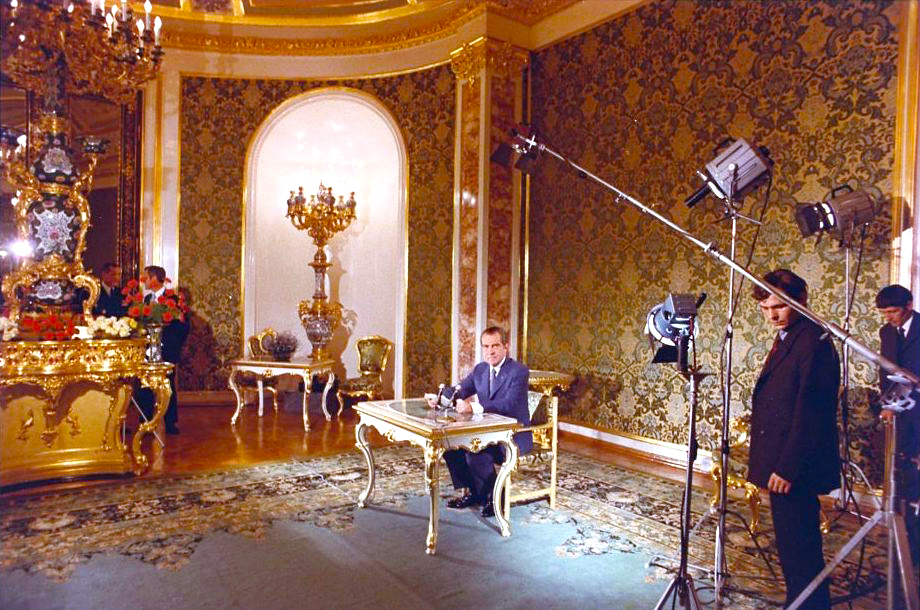President Nixon spoke directly to the Soviet and American people in a live television address from Moscow
In all the bilateral negotiations, backchannel consultations, and breakthrough agreements that occurred before and during the first Moscow summit, it is easy to overlook other manifestations of President Nixon’s approach of détente to Soviet-American relations. Nixon knew that even a perfect SALT agreement could not spark and preserve a shared sense of understanding between the Soviet and American people.
On his previous trip to the Soviet Union, Vice President Nixon delivered a public speech to the Soviet people on the state of the superpower’s uncertain relationship. He resolved to continue the tradition early in the planning for his 1972 trip to Moscow, and a dozen drafts later, Nixon became the first U.S. president to directly address the Soviet people. He spoke from the Green Room in the Grand Kremlin Palace on May 28, 1972 in a live radio and television broadcast transmitted across the Soviet territories. The speech aired simultaneously in the United States so that that Americans could listen to the President’s message to their greatest adversaries.
President Nixon wrote about the broadcast in his memoir, recalling that “I felt that this would be a very important opportunity for me to present the American viewpoint on international issues to the Russian people without any editing or control by the Soviet government.” In the address, he provided the Soviet people with an incisive description of the American character, and asserted that Soviets and Americans, although ideologically opposed, were similar in spirit. According to Nixon, both nations have diverse populations, comprised of strong, hardworking, friendly people.
He also impressed upon the Soviet people the significance of the recent meetings between Soviet and American leadership, stating:
“As we conclude this week of talks there are certain fundamental premises of the American point of view which I believe deserve emphasis…we have sought to construct a better framework of understanding between our two nations, to make progress in our bilateral relationships, and to find ways of ensuring that future frictions between us would never embroiled our two nations, and therefore the world, in war.”
The televised address presented President Nixon with the unique opportunity to reach out to the Soviet people, and attempt to bridge the ideological rift separating the Soviet Union and the United States. Although a single speech could not mend the divide between the two nations, and the Cold War would continue for another twenty years, President Nixon’s Moscow broadcast was an important symbolic step towards a better Soviet-American relationship based on mutual understanding. Watch the President’s full address:

